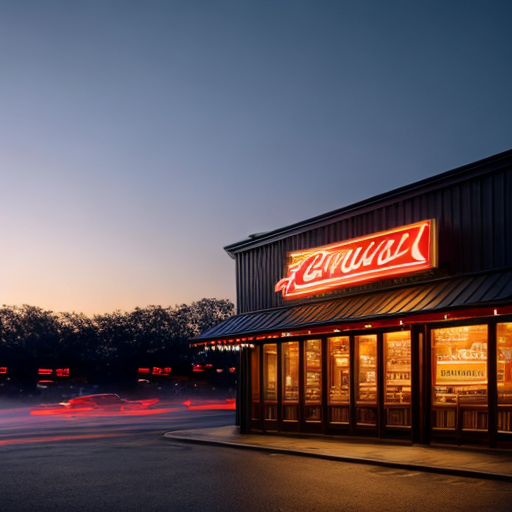Understanding Profit Margins in the Restaurant Industry
Understanding profit margins in the restaurant industry is crucial for the success of any establishment. The average profit margin for a restaurant can vary greatly depending on factors such as location, type of cuisine, and operational efficiency. Generally, a healthy profit margin for a restaurant falls between 3-5%, with fine dining establishments typically seeing higher margins than fast-food chains. It is important for restaurant owners to closely monitor their profit margins and make adjustments to pricing, menu offerings, and expenses in order to maximize profitability and ensure long-term success in a competitive industry.
Factors Influencing Average Profit Margins for Restaurants
The average profit margin for a restaurant typically ranges between 3% to 5%. However, it is important to note that profit margins can vary significantly depending on various factors such as the type of cuisine, location, size of the establishment, and management efficiency.
Factors influencing average profit margins for restaurants include food and labor costs, rent and overhead expenses, menu pricing strategies, and customer volume. Food and labor costs are significant contributors to a restaurant's profit margin, as well as the efficiency of operations and staff management. Rent and overhead expenses can also impact profit margins, especially in high-cost urban areas. Menu pricing strategies play a crucial role in determining profit margins, with the need to balance competitive pricing with profitability. Lastly, customer volume directly affects a restaurant's revenue and ultimately its profit margin, making marketing and customer retention key factors in maintaining a healthy average profit margin for a restaurant.
Analyzing the Average Profit Margins of Different Restaurant Types

Analyzing the average profit margins of different restaurant types reveals a wide range of financial performance within the industry. Fine dining establishments typically boast higher profit margins compared to fast-food chains or casual dining restaurants. This is due to the higher menu prices, which allow for greater profit margins despite potentially lower customer volume. Fine dining restaurants often focus on providing a premium dining experience, which justifies the higher prices and contributes to their ability to maintain healthy profit margins.
On the other end of the spectrum, fast-food chains tend to operate on slimmer profit margins due to lower menu prices and higher competition. While fast-food restaurants may have higher customer volume, the lower prices and higher operating costs can eat into their profit margins. However, the advantage of fast-food chains lies in their ability to scale operations and achieve economies of scale, which can help offset lower profit margins through higher sales volume.
Casual dining restaurants fall somewhere in between fine dining and fast-food establishments in terms of profit margins. These restaurants typically offer a more relaxed dining experience than fine dining but with higher menu prices than fast-food chains. The profit margins of casual dining restaurants can vary depending on factors such as location, menu offerings, and operational efficiency. By striking a balance between price point and customer volume, casual dining restaurants can achieve moderate profit margins while catering to a broader customer base.
Another factor that influences the average profit margins of different restaurant types is the concept or cuisine offered. For example, niche or specialty restaurants that cater to a specific market segment may be able to command higher prices and achieve better profit margins compared to more generic dining establishments. Additionally, factors such as food costs, labor efficiency, and overhead expenses play a significant role in determining the profit margins of different restaurant types, regardless of their concept or cuisine.
In conclusion, analyzing the average profit margins of different restaurant types highlights the diverse financial landscape within the industry. Fine dining establishments, fast-food chains, and casual dining restaurants each have their own unique challenges and opportunities when it comes to maintaining healthy profit margins. By understanding the factors that influence profit margins, restaurant owners can make informed decisions to optimize their financial performance and ensure long-term success in a competitive market.
Strategies to Improve Profit Margins in the Restaurant Business
The average profit margin for a restaurant is typically around 3-5%. However, did you know that some restaurants have managed to achieve profit margins as high as 10-15%? It just goes to show that with the right strategies and delicious food, a restaurant can truly savor success!
Strategies to improve profit margins in the restaurant business include closely monitoring food and labor costs, implementing menu engineering to highlight high-profit items, optimizing pricing strategies based on market trends and competition, and investing in staff training to improve efficiency and customer service. By analyzing key performance indicators and making data-driven decisions, restaurant owners can identify areas for cost savings and revenue growth, ultimately leading to an increase in average profit margins. Additionally, fostering customer loyalty through personalized experiences and targeted marketing campaigns can help drive repeat business and boost overall profitability in a competitive industry.

